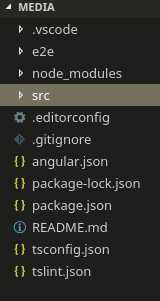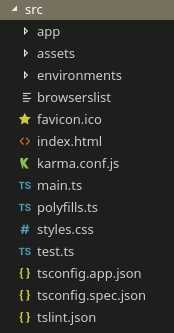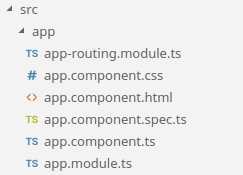标签:页面 lint 配置文件 arm exp fill ref read nod
本教程基于Angular7,更新时间2018-11-05.



首先打开项目脚本的入口文件main.ts文件,内容如下:
import { enableProdMode } from ‘@angular/core‘;
import { platformBrowserDynamic } from ‘@angular/platform-browser-dynamic‘;
import { AppModule } from ‘./app/app.module‘;
import { environment } from ‘./environments/environment‘;
if (environment.production) {
enableProdMode();
}
platformBrowserDynamic().bootstrapModule(AppModule)
.catch(err => console.error(err));
其中的语句 import { AppModule } from ‘./app/app.module‘;表示引用了AppModule,路径是./app/app.module,就是app目录下的app.module.ts文件。
app.module.ts的文件内容如下:
import { BrowserModule } from ‘@angular/platform-browser‘;
import { NgModule } from ‘@angular/core‘;
import { AppRoutingModule } from ‘./app-routing.module‘;
import { AppComponent } from ‘./app.component‘;
@NgModule({
declarations: [
AppComponent
],
imports: [
BrowserModule,
AppRoutingModule
],
providers: [],
bootstrap: [AppComponent]
})
export class AppModule { }
其中的import { AppComponent } from ‘./app.component‘表示引用了AppComponent组件,即为app目录下的app.component.ts文件。
app.component.ts文件内容如下:
import { Component } from ‘@angular/core‘;
@Component({
selector: ‘app-root‘,
templateUrl: ‘./app.component.html‘,
styleUrls: [‘./app.component.css‘]
})
export class AppComponent {
title = ‘app‘;
}
index.html文件内容如下:
<!doctype html>
<html lang="en">
<head>
<meta charset="utf-8">
<title>Media</title>
<base href="/">
<meta name="viewport" content="width=device-width, initial-scale=1">
<link rel="icon" type="image/x-icon" href="favicon.ico">
</head>
<body>
<app-root></app-root>
</body>
</html>
其中的body标签中的app-root标签即为app.component.ts中定义的选择器名称。
Angular教程-02-Angular项目目录及基本文件说明
标签:页面 lint 配置文件 arm exp fill ref read nod
原文地址:https://www.cnblogs.com/dwllm/p/9912076.html